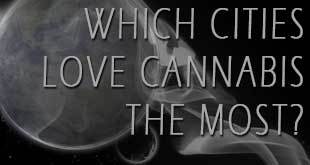
Marijuana is still a hot topic in politics today with many states overturning prohibition and lawmakers working to change federal law. A contributing factor to the anti-prohibition movement is to get drugs off the streets and make it regulated. Though this plant that has, in its own right, been found to be safer and healthier than alcohol and cigarettes there is still reasonable concern that it will remain in the hands of drug traffickers. Having unsafe cultivation and sales practice isn't the only concern here. Safety and quality of the product becomes an issue when it's not regulated. Not to mention the millions of dollars that are going straight into the hands of drug dealers depriving states of tax revenue.
The Seedo 2018 Cannabis Price Index
While many may argue that legalization opens the door for more usage, Seedo, a marijuana tech company based in Tel Aviv, Israel, published their 2018 Cannabis Price Index and proved that theory to be wrong. Seedo's report includes what they have calculated to be the top 10 cities that use marijuana the most. The results are very surprising and show that banning the plant for recreational use in a state doesn't mean it's not being sold or utilized there.
New York Beats Out Los Angeles
In fact, New York has been rated the city in the world with the most marijuana usage. The plant isn't legal in the state and, until recently, has barely even had a functional medical marijuana infrastructure in the state. Nonetheless, it has ranked the highest in pot usage. According to the study, New York consumes 77.44 metric tons of marijuana every year. If it were taxed, it could potentially bring in $156.4 million dollars according to Seedo. Los Angeles on the other hand, where the plant is legal for both medical and recreational use, ranked number 4 on the list, consuming 36.06 metric tons each year.
The U.S. List

While Alaska and Oregon have had legal marijuana since 2014, they did not even make the list for the most marijuana smoked in the U.S. Seattle, Washington and Denver, which has also had legal recreational marijuana since 2014, barely even made the list for the U.S., ranking 9th and 10th out of the 13 states that made the U.S. list. Chicago was 3rd, after New York and Los Angeles followed by Houston, Phoenix, Philadelphia and Dallas. Then the legal cities of San Francisco, Seattle and Denver rank, followed by Washington D.C., Boston and Miami. All in all, it would appear that the plant's legal status does not reflect usage around the country. In the states where it is legal, however, the state is able to ensure safety and quality testing, cultivation and distribution as well as earn tax revenue for community needs. In the states where usage is high but illegal, all the revenue goes to support unregulated drug traffickers. While marijuana remains a Schedule I drug and illegal on a federal level, legalization and regulation of the plant continues to occur on a state by state basis.
 Marijuana is still a hot topic in politics today with many states overturning prohibition and lawmakers working to change federal law. A contributing factor to the anti-prohibition movement is to get drugs off the streets and make it regulated. Though this plant that has, in its own right, been found to be safer and healthier than alcohol and cigarettes there is still reasonable concern that it will remain in the hands of drug traffickers. Having unsafe cultivation and sales practice isn't the only concern here. Safety and quality of the product becomes an issue when it's not regulated. Not to mention the millions of dollars that are going straight into the hands of drug dealers depriving states of tax revenue.
Marijuana is still a hot topic in politics today with many states overturning prohibition and lawmakers working to change federal law. A contributing factor to the anti-prohibition movement is to get drugs off the streets and make it regulated. Though this plant that has, in its own right, been found to be safer and healthier than alcohol and cigarettes there is still reasonable concern that it will remain in the hands of drug traffickers. Having unsafe cultivation and sales practice isn't the only concern here. Safety and quality of the product becomes an issue when it's not regulated. Not to mention the millions of dollars that are going straight into the hands of drug dealers depriving states of tax revenue.





















